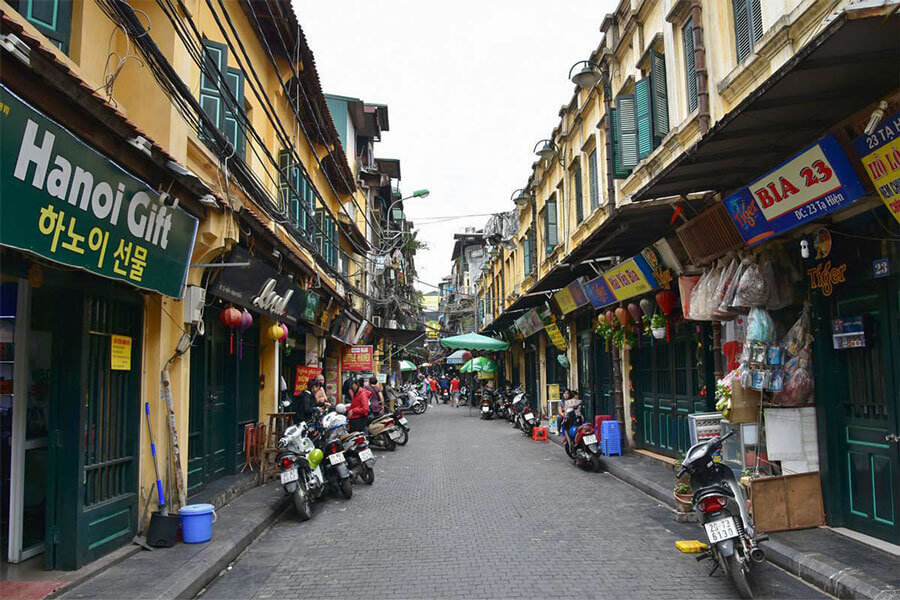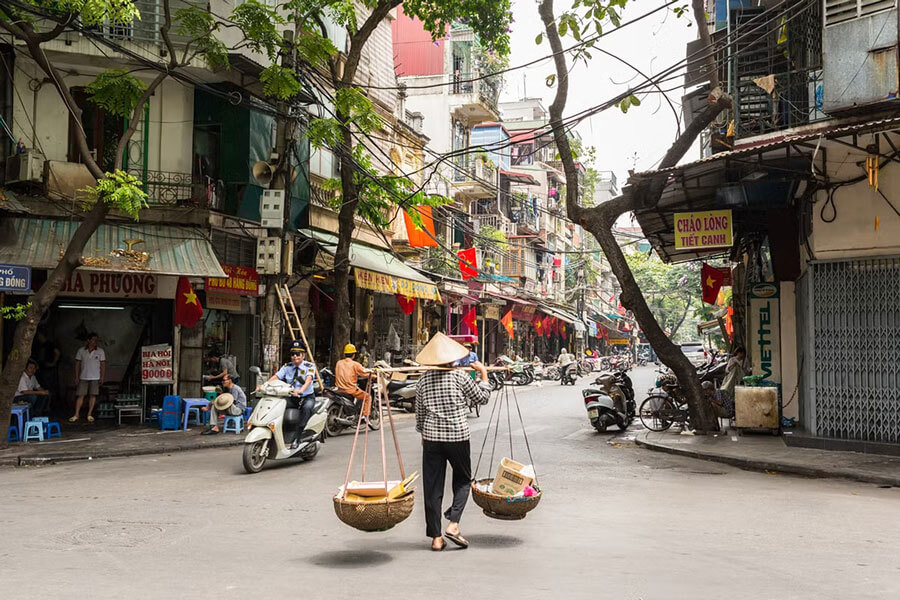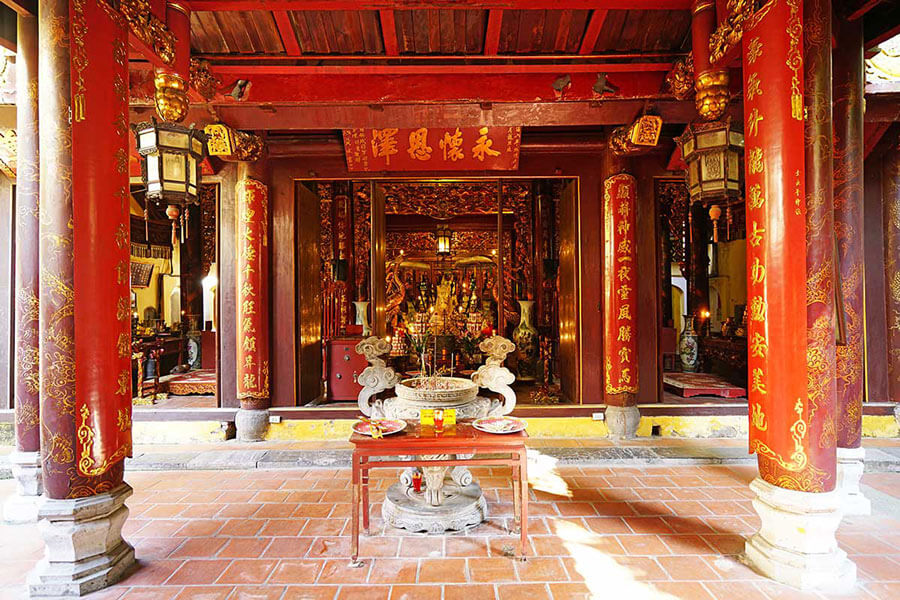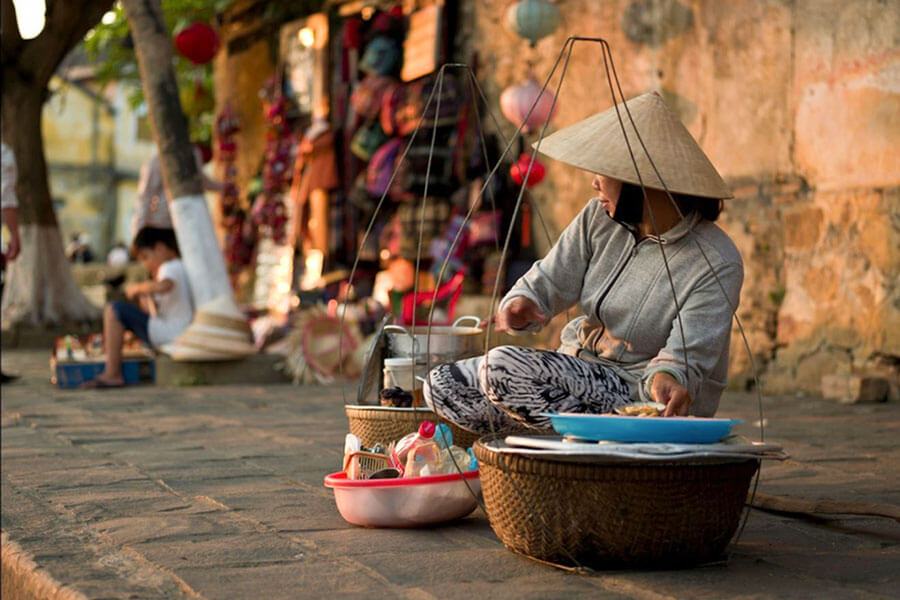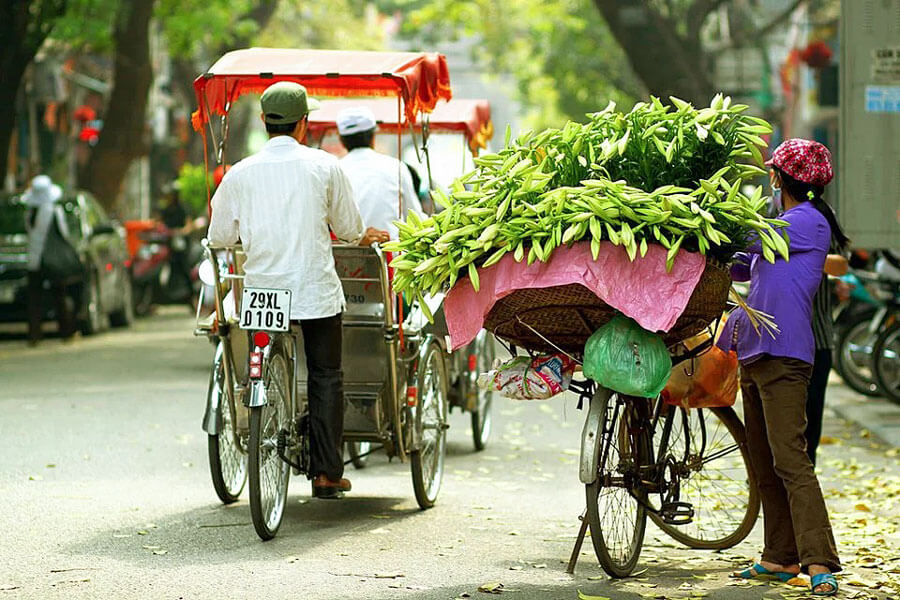Hanoi Old Quarter is a must-see place when traveling to Vietnam. Nestled within the bustling capital city of Vietnam, Hanoi’s Old Quarter stands as a living testament to the nation’s captivating history and cultural legacy. With its narrow streets, vibrant markets, and French colonial architecture, the Old Quarter is a treasure trove of sights, sounds, and flavors waiting to be discovered. Known for its 36 iconic streets, each specializing in a particular trade or craft, this vibrant neighborhood has become a must-visit destination for travelers seeking an authentic glimpse into the soul of Hanoi.
Unveiling the Historical Tapestry
Step foot into the Hanoi Old Quarter, and you’ll find yourself transported back in time. Established over a thousand years ago, this historic neighborhood dates back to the days when Hanoi was a trading hub. Each of the 36 streets was dedicated to a specific trade, and the names of the streets reflect their original purpose. From Hang Bac (Silver Street) to Hang Gai (Silk Street) and Hang Ma (Paper Street), the narrow lanes retain the essence of their historical roots.
Hanoi Old Quarter Highlights
Exploring Hanoi 36 Streets
The Old Quarter is a labyrinth of streets, each with its own distinct character and charm. From Hang Bac (Silver Street) to Hang Gai (Silk Street), and from Hang Ma (Paper Street) to Hang Quat (Fan Street), the names themselves evoke the traditional trades that were once the lifeblood of the community. Wandering through these streets, visitors can immerse themselves in the vibrant atmosphere, witnessing craftsmen at work, browsing through shops filled with local goods, and savoring delicious street food.
Preserving Tradition and Culture
While the Old Quarter has embraced modernity, it has also managed to preserve its rich cultural heritage. The architecture reflects a blend of Vietnamese and French influences, with narrow tube houses adorned with colorful facades and charming balconies. Many of these historic buildings have been converted into boutique hotels, art galleries, and traditional tea houses, providing a unique experience for visitors. The neighborhood’s cultural significance is further celebrated through its numerous temples, pagodas, and communal houses. Among the most notable is the Bach Ma Temple, the oldest temple in Hanoi, dedicated to the White Horse deity, and a symbol of the city. Visitors can also explore the ancient Long Bien Bridge, a historic railway bridge spanning the Red River, offering stunning views of the surrounding area.
Gastronomic Delights
No visit to the Old Quarter would be complete without indulging in the delectable street food that abounds in this neighborhood. Food stalls and tiny restaurants line the streets, offering a wide array of Vietnamese delicacies. From the world-famous pho (Vietnamese noodle soup) to the crispy banh mi (baguette sandwich), and from the fragrant bun cha (grilled pork with noodles) to the refreshing ca phe trung (Vietnamese egg coffee), every corner presents an opportunity to savor the rich flavors of Vietnam’s cuisine.
The Hanoi Old Quarter Today
Recognizing the significance and charm of the Old Quarter, local authorities and preservation organizations have made concerted efforts to safeguard its heritage. Restoration projects, strict zoning regulations, and cultural initiatives have been put in place to ensure the district’s longevity and authenticity.
Visitors to the Old Quarter are encouraged to respect the neighborhood’s cultural and historical value, supporting local businesses and artisans. Engaging with the community and participating in activities such as traditional craft workshops or guided heritage tours can contribute to the sustainable development and preservation of this cherished district. With their in-depth knowledge of the local culture and expertise in curating authentic experiences, Viet Dan Travel – Trusted Vietnam DMC can help you discover hidden gems, connect with local artisans, and gain a deeper understanding of the Old Quarter’s rich heritage.

